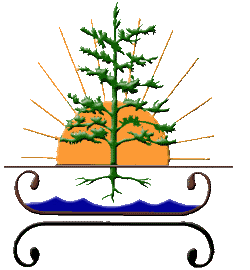
Abenaki History
Our People
Jesuit Father Pierre Biard came in contact with Abenaki Indians at Kennebec in 1611. He attributed to them the qualities of "noble savages". In an excerpt from the Jesuit Relations, he wrote this:
" ... The most prominent sagamore was caled Betsabes, a man of great discretion and prudence; and I confess we often see in these savages natural and graceful qualities which will make anyone but a shameless person blush, when they compare them to the greater part of the French who come over here."
Jesuit Father Sebastien Rasles spent most of his life among the Abenaki. He produced an Abenaki-French dictionary.
In a letter to his brother in 1723, he wrote the following about the Abenaki language: "It cannot be denied that the language of the savages has real beauties, and there is an indescribable force in their style and manner of expression."
Our Sacred Land
The Wabanaki were divided into the Western Abenaki, which were located west of the White Mountains, in New Hampshire, Vermont and Quebec, Canada and the Eastern Abenaki in Maine, Nova Scotia, Newfoundland and New Brunswick.
The Cowasuck, meaning the "people of the white pines", were located in the upper region of the Connecticut River.
The Pennacook, also called Merrimac, were located around Concord, New Hampshire and north central Massachusetts. The name means "at the bottom of the hill".
The Cowasucks Refuse Refuge 1704
Withdrawal, and even migration, was a common Abenaki response to military danger and the disruption of war. Many Abenakis followed well-worn paths to mission villages in Canada, where the French welcomed them with open arms. IN 1704, Governor Vaudreuil invited several tribes to resettle on the St. Lawrence where they could enjoy French protection against the English.
Some bands accepted, but the Cowasucks preferred to stay and fight in their homeland. The same month that the Cowasuck delegates were decling Vaudreuil's offer, Caleb Lyman was leading his expedition against their village.
Speech of the Abenaki Indians of Cowasuck to the Governor-General, 13 June 1704
Father, to tell the truth you have shown great care for me in inviting me to come and settle on your lands. However, I cannot bring myself to come there because the English have already struck me too hard. I believe, therefore, that the only place where I can strike back against the English is the place I come from, which is called Cowasuck. I could not do that easily if I was in your country. (Presented a wampum belt.)
Father, hear me, I wish to remain at Cowasuck. It is true you have acted well in offering me a fort on your lands, and that would have been good if we had been at peace as we used to be, and we could have done it easily. But hear me, I am a warrior. I offer you my village which is like a fort thrust towards the enemy, sot hatyour lands on this side can be protected, and so that you can think of me as "my child who is at Cowasuck to carry on the war and protect me, serving as a palisade against my enemies."
National Archives of Canda, MG1 F3, vol. 2:407-10; editor's translation.
The above was taken from Dawnland Encounters, Indians and Europeans in Northern New England
Edited by Colin G. Calloway; pp. 151-152, (c) 1991 by University Press of New England.
Permission to reprint the above is pending.
Cowasuck Band of the Pennacook - Abenaki People
Alton, New Hampshire 03809-0052
Phone: 603-776-1090
Email: cowasuck@tds.net